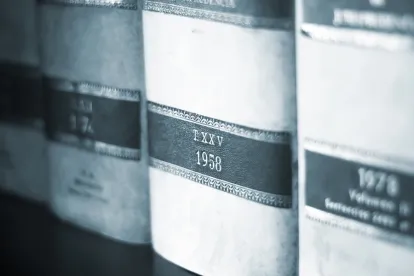In January 2020, a PFAS bill was introduced in the Vermont Senate (“An Act Relating To Restrictions On Perfluoroalkyl and Polyfluoroalkyl Substances and Other Chemicals of Concern In Consumer Products”) that would significantly impact the sale of certain PFAS-containing products within and to the state of Vermont.
The bill, S. 295, makes the following proposals for the following PFAS-containing items:
-
impose restrictions on the use, manufacture, sale, and distribution of class B firefighting foam containing PFAS, unless such foams are required by federal law (the bill also prohibits the use of PFAS firefighting foam for training exercises);
-
impose restrictions on the production, sale, and distribution of food packaging to which PFAS have been intentionally added;
-
impose restrictions on the manufacture, sale, and distribution of residential rugs and carpets to which PFAS have been intentionally added; and
-
include PFAS on the list of chemicals of high concern to children
In addition to the above limitations, the bill proposes that any firefighting personal protective equipment that contains PFAS must have a warning indicating that the item contains PFAS and the reason for the use of PFAS in the product. No guidance is provided as to what justification a manufacturer would need to provide for the “reason for the use.” Further, the bill would require manufacturers of PFAS-containing firefighting foam to recall any previously sold product and reimburse the purchaser.
The bill now sits with the Vermont House for consideration. In its initial form, the bill proposed that its effective date would be July 1, 2020, except for the firefighting foams (July 1, 2021 effective date for that section) and food packaging and carpets (July 1, 2022 for those sections). The COVID-19 pandemic cause the Vermont Legislature to temporarily close; however, as of August 25, 2020, the Legislature is now conducting business remotely.
Those following the PFAS legislation in various states expect the bill to pass in Vermont in 2020. If passed, Vermont would join a small handful of states that have banned PFAS-containing food packaging, a growing number of states that are banning PFAS-containing firefighting foams, and would be one of the first states to ban the sale or distribution of PFAS-containing carpets and rugs.
It is of the utmost importance for businesses along the whole supply chain to evaluate their PFAS risk. Public health and environmental groups urge legislators to regulate these compounds. One major point of contention among members of various industries is whether to regulate PFAS as a class or as individual compounds. While each PFAS compound has a unique chemical makeup and impacts the environment and the human body in different ways, some groups argue PFAS should be regulated together as a class because they interact with each other in the body, thereby resulting in a collective impact. Other groups argue that the individual compounds are too diverse and that regulating them as a class would be over restrictive for some chemicals and not restrictive enough for others. This is not the first time this debate has been raised when regulating chemicals and materials. Experts initially debated whether to regulate asbestos as a class or by individual fiber type due to the varying potency levels for each fiber type.
Companies should remain informed so they do not get caught off guard. Regulators at both the state and federal level are setting drinking water standards and notice requirements of varying stringency. For any manufacturers, especially those who sell goods interstate, it is important to understand how those various standards will impact them, whether PFAS is regulated as individual compounds or as a class. Conducting regular self-audits for possible exposure to PFAS risk and potential regulatory violations can result in long term savings for companies and should be commonplace in their own risk assessment.




 />i
/>i

